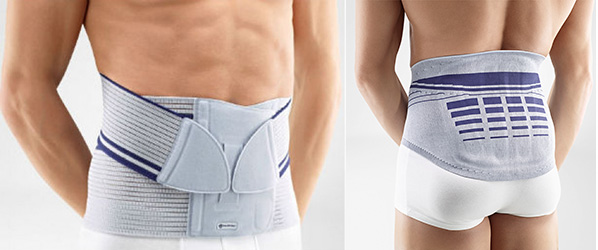Most people have some type of back problem at one time or another in their lifetime. Back problems can occur anywhere from the neck to the tailbone and can be a result of wear and tear, overuse or injury. Injuries frequently occur when you use your back muscles in activities that you do not do very often such as lifting heavy objects, yard work, painting, etc. Overuse injuries are most often from improper movement or posture. Minor injuries also occur from tripping, falling a short distance or excessive twisting of the spine. Severe back injuries may result from vehicle accidents, falls from significant heights, direct blows, a high-energy fall onto the buttocks, or a penetrating injury such as a stab wound. Common medical conditions/deformities such as ankylosing spondylitis, osteoarthritis, spinal stenosis, scoliosis, kyphosis affect your daily activities, restrict movement and cause different levels of pain. There are many thoughts on the effect of a back brace. Some facts on back braces are:
- Back braces remind the wearer to avoid undesirable movements
- Back braces help to achieve proper posture
- Back braces stabilize the pelvis and spine
A very common myth is that wearing a back brace weakens the abdominal muscles and causes poor body mechanics. Back braces are designed to help the wearer achieve proper posture and increase awareness of the position of the pelvis and spine. This constantly reminds individuals of their body positions, making it easier to avoid undesirable postures while in the healing or strengthening process. By increasing the intra-abdominal pressure, a back support acts much like the stays and support rings of a barrel. If the support rings are tightened a stabilizing effect is achieved. A properly designed spinal support stabilizes the spine and acts in the same way. There are many types of back braces. It is important that the correct brace is selected for the condition or injury but as well, it is as important that the brace fit the shape of the individual. When the patient cannot avoid certain activities, such as work, then the use of a brace is an important part of the treatment process. It is important that you be assessed by a professional who takes all aspects of your health, lifestyle, and body type into consideration. Most insurance companies cover braces if prescribed by a medical professional.
Soles in Motion also encourages you to come in and talk to us, let us assess your gait and the footwear you are wearing, these too may be contributing to your pain. We are here to help and keep you moving no matter what your abilities!
Submitted by:
Jen Estabrooks,
Co-owner, General Manager,
Soles in Motion,
133 Baker Drive, Dartmouth 902-468-7911 (solesinmotion.ca)

